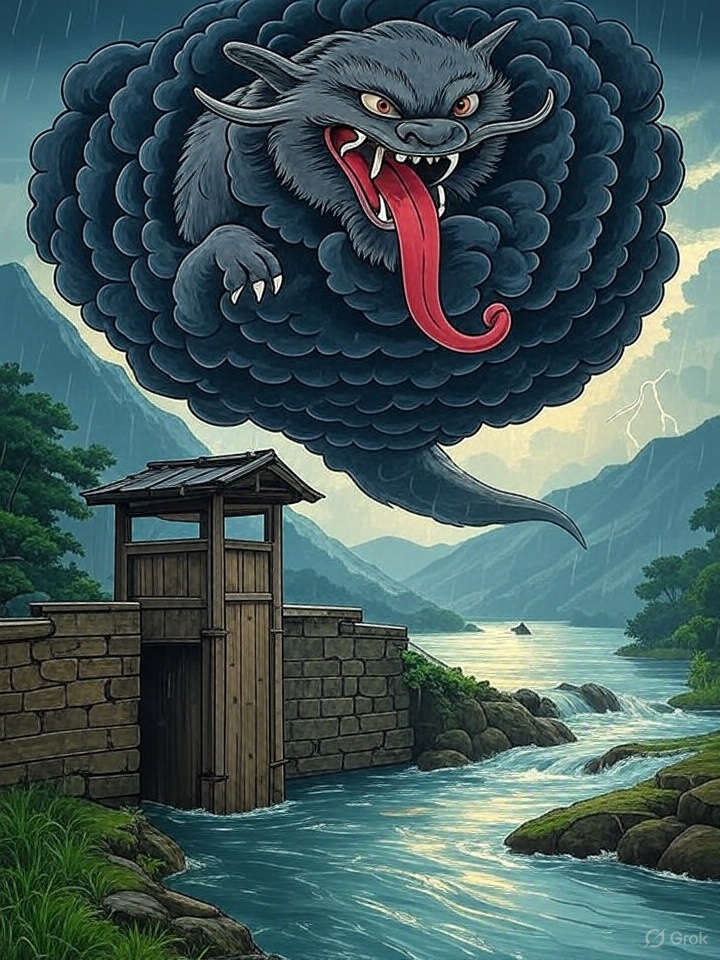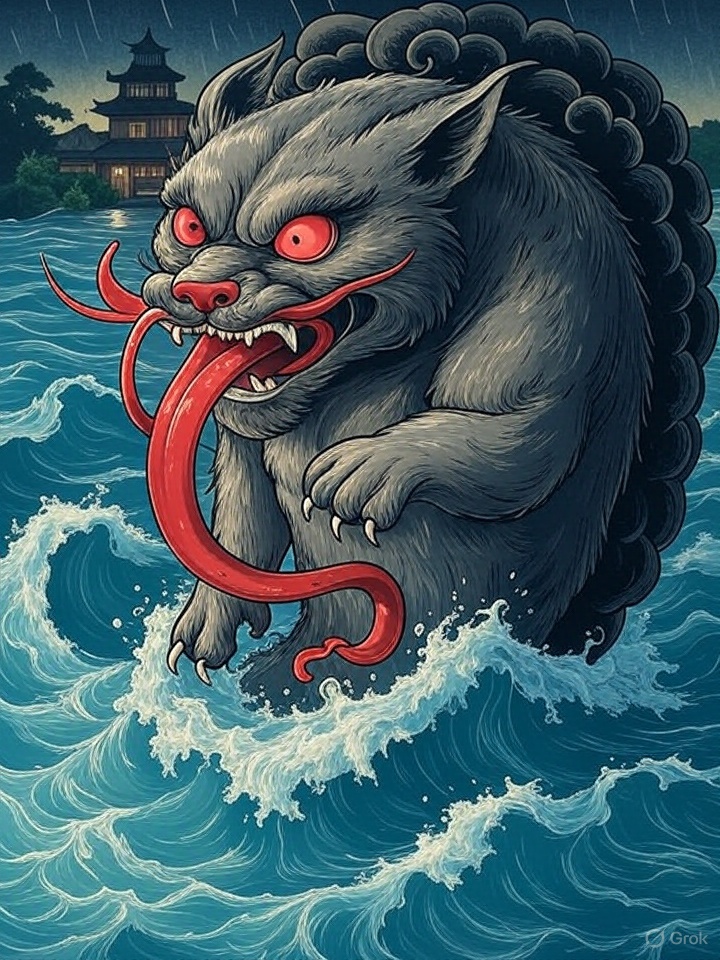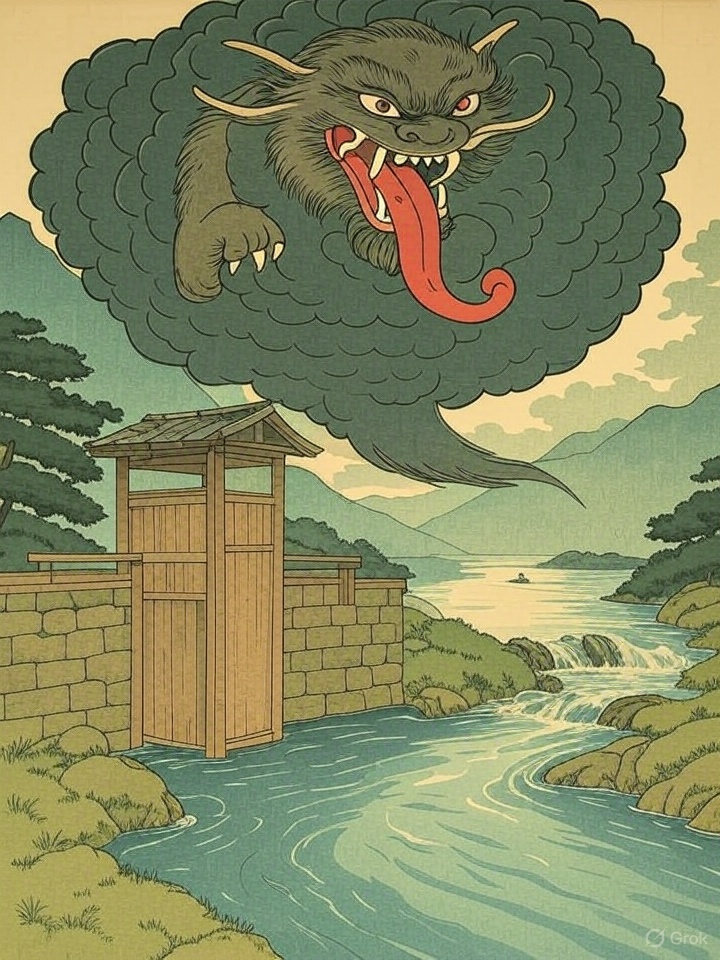Name Meaning
Overview
\n
Akashita (赤舌) is a fearsome and ominous yōkai from Japanese folklore, known for its dramatic appearances and symbolic role as a punisher of greed and corruption. It’s one of the more visually striking spirits depicted in classical yōkai art.
- Aka (赤) = Red
- Shita (舌) = Tongue → “Red Tongue”
Origin
- Most famously depicted in Toriyama Sekien’s Gazu Hyakki Yagyō (The Illustrated Night Parade of a Hundred Demons).
- Appears hovering above a floodgate, often amidst a dark cloud or storm, watching with gleaming eyes and a grotesque tongue.
Appearance
- Massive, bestial face emerging from thick black smoke or storm clouds.
- Features a huge, blood-red tongue that extends grotesquely from its mouth.
- Eyes glow menacingly, and its expression is often twisted with rage or hunger.
- Only the head is visible; the rest is concealed by swirling mist or storm.
Behavior & Setting
- Haunts floodgates, rivers, and irrigation canals—places tied to agriculture and water management.
- Said to appear when greedy officials or corrupt landowners tamper with water flows for selfish gain.
- The Akashita serves as a spiritual enforcer, unleashing floods, storms, or destruction upon those who disrupt nature’s balance or exploit others.
Symbolism
- Represents natural retribution, especially tied to the tampering of water resources.
- Warns against greed, selfishness, and failing to respect nature’s power.
- Embodies both the chaos of natural disasters and the moral order of the supernatural world.
In Yōkai Lore
- A lesser-known yōkai, but highly visual—often recreated in art due to its dramatic form.
- Sometimes linked to water deities or storm spirits in regional variations.



